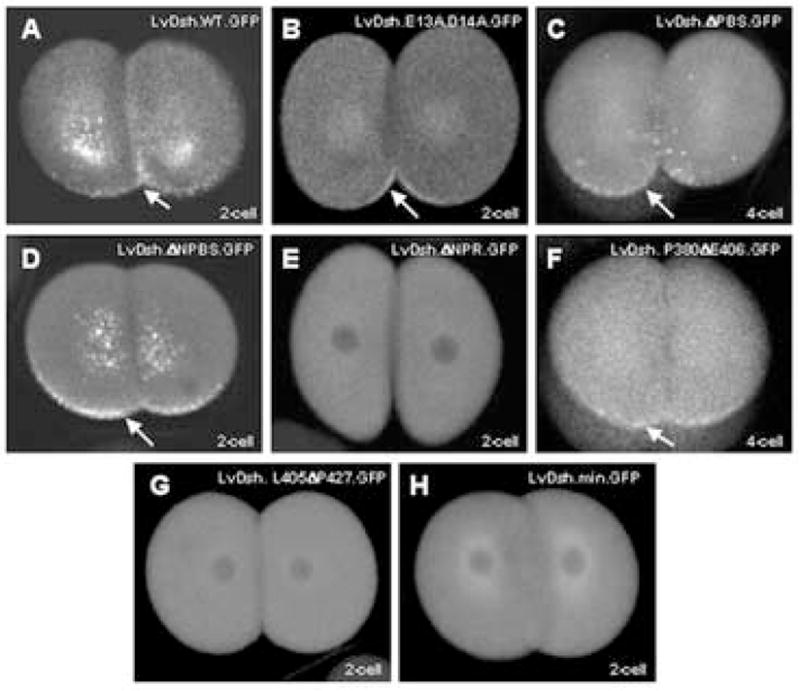Figure 3.

Analysis of residues in LvDsh required for VCL. (A–H) mRNAs encoding wild-type LvDsh or one of its variants were injected at a concentration of 8 mg/ml into fertilized L. variegatus eggs. Embryos were scored for GFP fluorescence during early cleavage stages. Specific embryological stages are noted. (A) Wild-type LvDsh injected embryos display typical vegetal, cortical localization (arrow). (B) Residues within the DIX domain shown to mediate lipid interaction were changed to alanine. Mutation of these residues does not prevent VCL (arrow). (C) Deletion of the Par1 binding site only partially attenuates protein targeting (arrow). (D) Deletion of the segment between the DIX domain and the Par1 binding site does not affect VCL (arrow). (E) VCL is completely abolished by deletion of the segment between the proline-rich region and the DEP domain. (F) Within this segment, deletion of the residues between P380 and E406 has no effect on VCL (arrow). (G) In contrast, deletion of the residues between L405 and P427 completely abolishes VCL. (H) A minimal construct containing the regions shown to be necessary for VCL is not sufficient to produce VCL.
